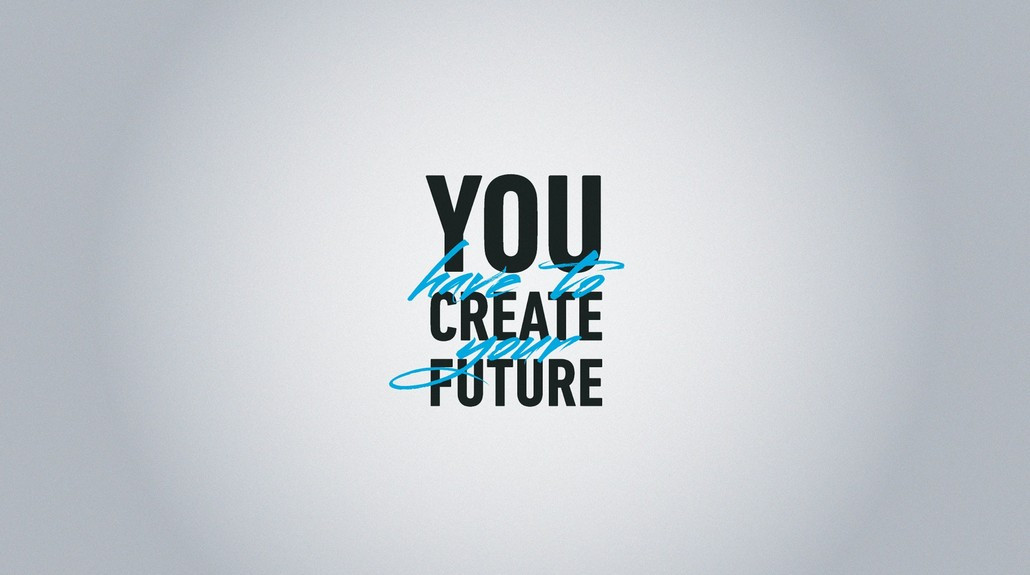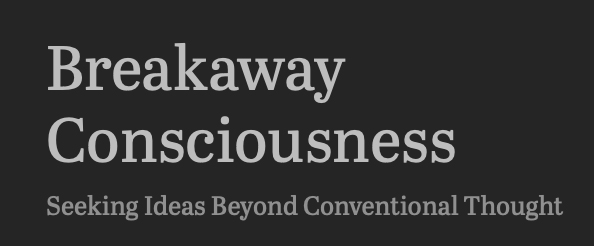How Many of Your Individual Actions Do You Control With Your Conscious Mind?
BY Zy Marquiez
Have you ever wondered what percentage of your choices are made by your conscious mind? It’s certainly an intriguing question to consider, and the answer might just shock you.
What do you think the answer may be? Some might think, 25%, 35%, maybe even 50%. Surely, it has to be over 50%, perhaps as high as 75-80%, maybe higher? In fact, if your answer was anything like mine and within that estimated range, then you would have been wrong. Some might think, “No way!” Yes way.
The actual answer is 5%! Yep! Only 5%.1
For an incisive explanation of this confounding phenomena, let’s amble along on a short journey into the mind of an individual who was trained as cell biologist, who later turned epigenetics researcher, Bruce Lipton Ph.D. Lipton’s lifework moves the long held scientific views of genetic determinism far beyond the field of Darwinian dogma, and into the newfound realm of Quantum Biology.
In his ingenious and scientifically backed refreshing book, The Honeymoon Effect the Science of Creating Heaven on Earth, Lipton goes on to state that:
“Neuroscience research tells us that because of the conscious mind’s ability to flit from thought to thought, humans, on average, use their personally creative conscious mind to control their behavior-regulating cognitive activity about 5 percent of the time. By default, the remaining 95 percent of our cognitive activity is controlled by previously acquired programs downloaded into the subconscious mind.”2
Did you catch that? Not only does the subconscious mind control 95% of your actions, but those actions are mostly previously acquired programs that were inculcated in our upbringing, and now run as defaults, and not by conscious choice. That’s a lot to take in, and certainly provides a much larger vantage point from which to view the mind and decision making in all circumstances.
What else does the subconscious mind do, though? On this, Lipton states:
“The subconscious mind is the mind that, Post-it notes be damned, compels us to lunge for the Krispy Kreme donuts in the refrigerator or fall for the biggest jerk at the party – again. The subconscious is associated with the neural activity of a much larger part of the brain (approximately 90 percent) than the conscious mind’s prefrontal cortex.”3
This translates to:
“The subconscious mind [having] a profoundly more powerful influence on our behavior than the conscious mind. The conscious mind’s prefrontal cortex can process and manage a relative measly 40 nerve impulses per second. In contrast, the 90 percent of the brain that constitutes the subconscious mind’s platform can process 40 million nerve impulses per second. That makes the subconscious mind’s processor 1 million times more powerful than the conscious mind’s.”4
No wonder it’s so hard to override the default programs that we grew up with! Why didn’t they teach that in school? Let’s just not go there…lest we unleash a tsunami of expletives that even the most verbose of sailors would be proud of.
The only way for an individual to change the behavior that stems from a subconscious program, like for instance, not being mindful in key moments as is a bad habit of mine, is by proactively and mindfully making sure that new neural pathways are created that override the old programs, thus rendering them obsolete, with a new programs kicking in bydefault.
It’s important however, not to see the subconscious mind as all powerful and incapable of change, given its significant processing capabilities. For a mindful perspective on this, let’s shift laterally to another one of Lipton’s unorthodox and forward-thinking books, The Biology of Belief – Unleashing The Power of Consciousness, Matter and Miracles.
In The Biology of Belief, Lipton urges readers not to:
“…consider the subconscious [mind] a scary, super-powerful, Freudian font of destructive “knowledge.” In reality, the subconscious is an emotionless database of stored programs, whose function is strictly concerned with reading environmental signals and engaging in hardwired behavior programs, no questions asked, no judgments made. The subconscious mind is a programmable “hard drive” into which our life experiences are downloaded.”5
Not only should individuals be mindful of the true nature of the subconscious mind and its functions, but the key takeaway is that the subconscious mind is programmable after all, and not impervious to change. This perspective allows individuals to know that solutions are always available.
In my case, whenever I get into my usual bad habits, I often remind myself it’s because of those programs. That is not to absolve myself of responsibility for my actions, but to take a realistic look into why certain choices engage by default. Then I tell myself, “What are you gonna do about it?”
At that point, it’s important to take an all-hands-on-deck approach that seeks to override these subconscious programs. Holding anything back will not work.
From time to time, there are various ways that individuals will seek to override these programs. Be that as it may, I will mention what works for me in hopes that it can aid others, as all of these suggestions are simple actions individuals can do, which are not only within the capacity of everyone, but will bring measurable results when mindfully employed.
After purposefully deciding which bad habit(s) I wish to override and tackle first, what works for me in due course is to proactively remind myself of how I wish to overcome them, in conjunction with what steps I will take, by employing alarms, post-it notes, asking friends and family to remind me, putting small notes in places I will oftcheck like journals, books, planners and so on, emailing myself reminders, anything and everything. In essence, I choose to employ tactics that will by their very nature interrupt what I am about to do, forcing my mind, either my conscious or more likely, subconscious mind, to disengage from what it was doing as it sees something that does not belong there, forcing it to process something new. This simple approach works wonders and I cannot overstate that.
In my case, what I found is that carrying out one or two of those suggestions can work, but most often barely ever snowballs into an avalanche that spawns true change as my subconscious mind continues to override my choices. This is not unlike going to the gym at the beginning of the year to find out weeks later that the habit you so longed to create didn’t work. Therefore, the key is repetition of the positive habit creating actions, which comes through repeatedly being reminded of what you wish to create in every way possible, or of what habits you are creating.
And the more mindfully an individual engages in the positive behavior-reprogramming habits that they choose for themselves, the quicker and more substantial the results will be. Eventually, with enough time and effort, these programs can and ultimately do override the old programs. But one must be ironclad in resolve and stay hyperfocused or it will not work.
In truth, I have found that employing 99% of conscious capacity is not good enough, because the power of the subconscious mind is much more unrelenting than your conscious mind, so to say that you need your A-game to spawn significant change is an understatement if there ever were one. One must be 1000% committed to create true change. That is not simply going all in with the mind and body, but with the soul.
Some might disagree, but reengineering how you think – by default – is not an easy process. Not by orders of constellations.Please recall:
“…your subconscious mind’s processor is 1 million times more powerful.”
In life, there’s times to hold aces back, sometimes a stack of them, but when it comes to self-care and your ability to fully take control of your life by overriding whatever bad habits you wish to override, one should spare no expense. Don’t shy away from whatever it takes, even if it means putting post it notes right in the middle of laptop screens, phones, TVs, whatever. You can’t be shy about change or what you want, that will only hold you and your inherent potential back.
To completely reprogram any bad habits, you have to be unremitting in your endeavor, and you have to stay focused in whatever way works best for you, as everyone is different. That said, the steps mentioned by me are by no means the only ones, but are the ones I mention because they are very simple to do and they work.
As the mystics and sages of the past used to intimate, “You are what you think.” That fact alone leaves a kaleidoscope of possibilities to be explored, as the veritable template of reality is there for the manifestation of whatever you seek to create in your life by the conscious choices that you make, that are not only able to change your environment, but also your genetics as well. In fact, these genetic changes can be so powerful, that they can be measurable in many subsequent generations.
That is part of the true nature and power of the mind when consciously employed to the fullest extent. That is power that You have at every instance in life, through every obstacle that is put on your path.
Step into that power, because it is right there for the taking.
____________________________________
Footnotes:
(Double check if first source is available)
[1] Marianne Szegedy-Maszak, “Mysteries of the Mind: Your Unconscious is Making Your Everyday Decisions,” U.S. News & World Report (February 8, 2005).
[2] Bruce Lipton Ph.D., The Honeymoon Effect, pg 74. Italics Emphasis In Original, Bold Emphasis Added.
[3] Ibid., pg. 75. Bold emphasis added.
[4] Ibid. Bold and underline emphasis added.
[5] Bruce Lipton Ph.D., The Biology of Belief – Unleashing The Power of Consciousness, Matter and Miracles., pg. 135. Bold emphasis added.
[6] Bruce Lipton Ph.D., The Honeymoon Effect, pg 75. Bold emphasis added.
__________________________________________________________
If you find value in this information, please share it. This article is free and open source. All individuals have permission to republish this article under a Creative Commons license with attribution to Zy Marquiez and BreakawayIndividual.com ___________________________________________________________
About Me:
Zy Marquiez a.k.a. Noctis Blackburn is author of Amor Vincit Omnia – Love Conquers All, and also an avid book reviewer, poet, inquirer, an open-minded skeptic, health freedom advocate, and writer who aims at empowering individuals in many ways, while also delving deeper and regularly mirroring subjects like Consciousness, Education, Creativity, Individuality, Ancient History & Ancient Civilizations, Forbidden Archaeology, Big Pharma, Alternative Health, Space, Geoengineering, Social Engineering, Propaganda, and much more.
Must Reads:
How A Generation Lost Its Common Culture by Patrick Deneen
Foundational Tools For Self-Directed Learning
Catherine Austin Fitts, The Black Budget, Missing Trillions, FASAB 56 & More
A Breakaway Civilization – What It Is, And What It Means For Us by Richard Dolan
7 Phenomenal Books For Homeschooling, Self-Directed Learners & Autodidacts
What Is A Breakaway Individual? Who Would Qualify As Such?
13 Great Reasons To Study Logic
Personal #Poetry And #Prose | #CreativeWriting #Love #Light #Darkness #Romance
Follow The Page On Facebook: https://www.facebook.com/BreakawayIndividual/
Come Follow Us on Twitter – Come Like Us on Facebook
Check us out on Instagram – And Sign Up for our Newsletter












